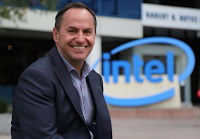Nokia reported Q4 2018 sales of EUR 6.9bn, up 3% year over year compared to EUR 6.7bn in Q4 2017 on both a reported and constant currency basis.
Nokia said its top line performance reflects the strong competitiveness across its portfolio and that its strategy execution is tracking well.
Rajeev Suri, President and CEO of Nokia, stated: "Looking forward, I expect Nokia’s performance to strengthen for the full year 2019 versus 2018 and our view of a fast and meaningful shift to 5G remains unchanged. Given that 5G rollouts will be staggered over the course of the year, we expect 2019 to have a soft first half followed by a much more robust second half."
"Over the longer-term, we expect a virtuous cycle of investment, where operators update their networks across multiple domains – from optical to macro radio, fixed wireless access to cloud core, small cells to IP routing, network agnostic software and more. Following this, we expect a second wave where industrial customers will invest in private wireless technology including LTE and 5G-ready networks. With our end-to-end portfolio, Nokia is well-positioned to tap this extended cycle."
Some highlights from Nokia's Networks business
https://www.nokia.com/sites/default/files/files/nokia_results_2018_q4.pdf
Nokia said its top line performance reflects the strong competitiveness across its portfolio and that its strategy execution is tracking well.
Rajeev Suri, President and CEO of Nokia, stated: "Looking forward, I expect Nokia’s performance to strengthen for the full year 2019 versus 2018 and our view of a fast and meaningful shift to 5G remains unchanged. Given that 5G rollouts will be staggered over the course of the year, we expect 2019 to have a soft first half followed by a much more robust second half."
"Over the longer-term, we expect a virtuous cycle of investment, where operators update their networks across multiple domains – from optical to macro radio, fixed wireless access to cloud core, small cells to IP routing, network agnostic software and more. Following this, we expect a second wave where industrial customers will invest in private wireless technology including LTE and 5G-ready networks. With our end-to-end portfolio, Nokia is well-positioned to tap this extended cycle."
Some highlights from Nokia's Networks business
- Ultra Broadband Networks net sales increased 7% year-on-year, primarily due to Mobile Networks, which benefitted from growth in radio networks and small cells. On a constant currency basis, Ultra Broadband Networks net sales increased 6%.
- Global Services net sales increased 7% year-on-year, primarily due to network implementation and, to a lesser extent, systems integration and managed services. On a constant currency basis, Global Services net sales increased 8%.
- IP Networks and Applications net sales increased 5% year-on-year due to both Nokia Software and IP/Optical Networks, primarily driven by our technology leadership. On a constant currency basis, IP Networks and Applications net sales increased 4%.
- The increase in IP/Optical Networks net sales was due to IP routing, reflecting strong uptake of our market leading FP4 portfolio, partially offset by optical networks. Despite clear supply chain improvements in the fourth quarter 2018, on a sequential basis, IP routing net sales continued to be adversely affected by some remaining shortages of certain components. The net sales performance in optical networks was solid in the context of a tough year-on-year comparison to a particularly strong fourth quarter 2017, which benefitted from certain large projects in Europe and Middle East & Africa.
- Nokia Software net sales in the fourth quarter 2018 achieved a record level, resulting from investments to build a dedicated software sales force and increasingly strong demand for the company's software portfolio built on a 5Gready and cloud-native Common Software Foundation. The increase in Nokia Software net sales was supported by significant percentage growth in CloudBand NFV management and orchestration, NetGuard security and self-organizing
- network software solutions, as well as network management and digital networks. Boosted by 5G commercialization and strong demand for cloud-native solutions, growth was particularly strong in North America, Asia-Pacific and Latin America.
https://www.nokia.com/sites/default/files/files/nokia_results_2018_q4.pdf




















































